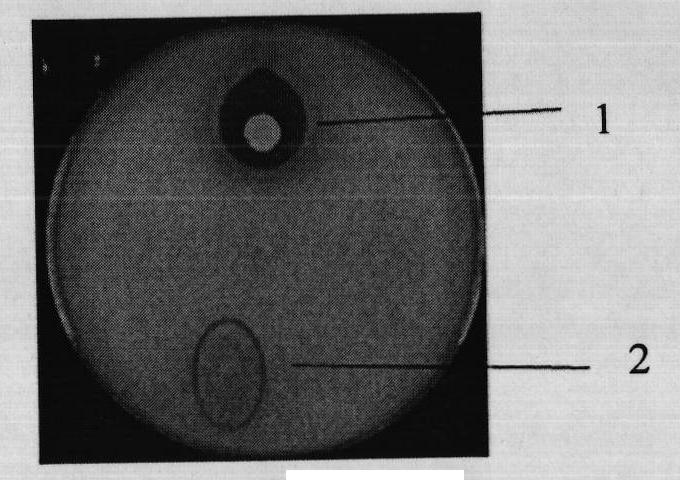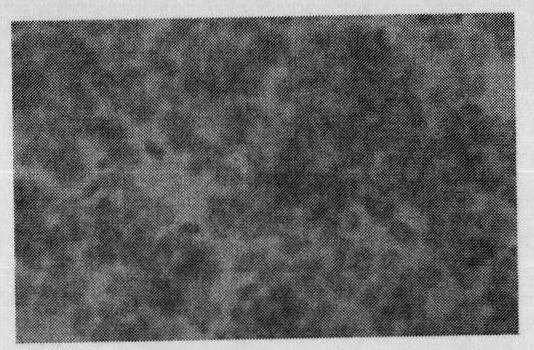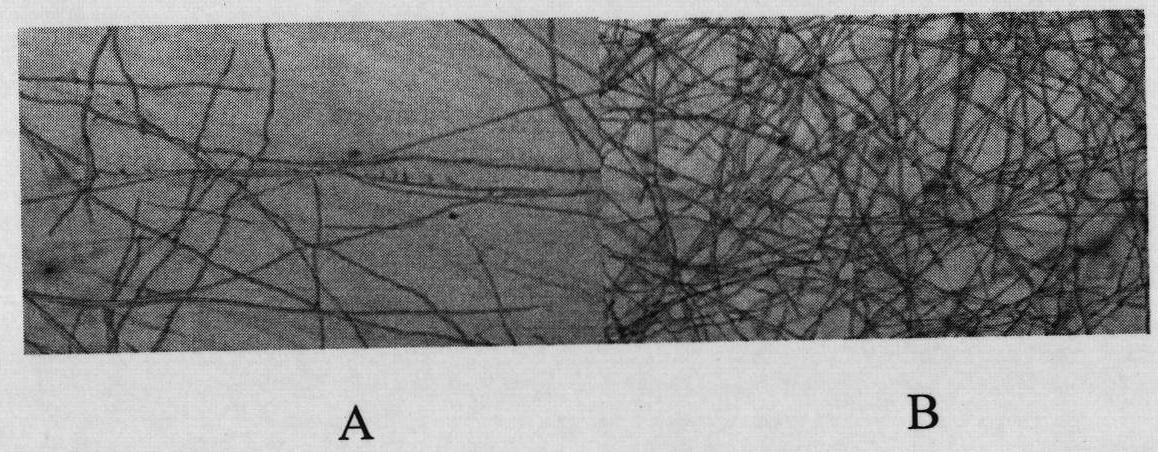Saprolegnia antagonist and application thereof
An antagonistic antibacterial and water mold technology, which is applied in the application field as a biosafety drug, can solve problems such as unfavorable purification, poor protein thermal stability, protease, etc., and achieves the effect of low cost of promotion and use.
- Summary
- Abstract
- Description
- Claims
- Application Information
AI Technical Summary
Problems solved by technology
Method used
Image
Examples
Embodiment 1
[0028] Example 1: Screening of Bacillus Sh1
[0029] 1. Plate confrontation culture method to screen Saprolegnia antagonistic strains
[0030] The bacteria to be selected and Saprolegnia were inoculated on the PDA plate respectively, and cultured at a constant temperature of 26°C for 3 days. When the mycelium of Saprolegnia was handed over around the antagonistic bacteria and an obvious inhibition zone appeared, the distance from the edge of Saprolegnia mycelium to the edge of the bacterial colony was used as Criteria for judging the magnitude of bacterial antagonism. Record the number of antagonistic strains.
[0031] 2. Discovery of Bacillus Sh1 that antagonizes Saprolegnia
[0032] The Saprolegnia used in this experiment grows well on the PDA plate at 26°C. Generally, after the agar block containing Saprolegnia mycelium is inoculated in the middle of the plate, the entire plate can be covered in three to four days. When using the flat plate confrontation culture method t...
Embodiment 2
[0035] Embodiment two: the identification of bacillus Sh1
[0036] 1. Identification of Bacillus Sh1
[0037] In this example, the molecular identification of Sh1 is carried out according to the sequence of bacterial 16S rDNA. The strain genomic DNA was extracted using the Genome Extraction Kit of Shanghai Tiangen. Using bacterial genomic DNA as a template, bacterial 16S rDNA universal primers: 27f: 5'-GAGAGTTTGATCCTGGCTCAG-3' and 1541r: 5'-AAGGAGGTGATCCAGCCGCA-3'; were selected to amplify the 16S rDNA sequence of Sh1. The PCR reaction conditions were set according to the product instructions of Shanghai Sangon's PCR kit. The amplified band was recovered from the DNA electrophoresis gel using the DNA recovery kit from Shanghai Tiangen. The recovered samples were sent to Shanghai Sangong for sequence determination. The type of Sh1 was determined by Blast similarity comparison with known bacterial 16S rDNA in Genbank.
[0038] 2. 16S rDNA sequencing identified Sh1 as Bacill...
Embodiment 3
[0042] Embodiment three: the bacteriostasis of bacillus Sh1
[0043] 1. Pathological observation of hyphae inhibition
[0044] Saprolegnia and Bacillus Sh1 were cultured on PDA medium at 26°C. When Saprolegnia formed an inhibition zone around Sh1, pick the hyphae at the edge of the inhibition zone and observe the changes of Saprolegniasis hyphae under a microscope.
[0045] 2. Inhibitory effect of Sh1 on saprolegniasis hyphae
[0046] In the antibacterial plate, the hyphae growing normally and the hyphae at the edge of the inhibition zone were compared and observed under the microscope. It can be found that the hyphae of the saprolegniasis at the edge of the inhibition zone are distorted, the hyphae are broken in many places or the middle part is constricted, and the growth of the mycelium is obviously inhibited. compare the two image 3 , A is the hyphae around the inhibition zone, B is the normal hyphae.
[0047] This example shows that Bacillus Sh1 has a strong inhibito...
PUM
| Property | Measurement | Unit |
|---|---|---|
| diameter | aaaaa | aaaaa |
Abstract
Description
Claims
Application Information
 Login to View More
Login to View More - R&D
- Intellectual Property
- Life Sciences
- Materials
- Tech Scout
- Unparalleled Data Quality
- Higher Quality Content
- 60% Fewer Hallucinations
Browse by: Latest US Patents, China's latest patents, Technical Efficacy Thesaurus, Application Domain, Technology Topic, Popular Technical Reports.
© 2025 PatSnap. All rights reserved.Legal|Privacy policy|Modern Slavery Act Transparency Statement|Sitemap|About US| Contact US: help@patsnap.com



